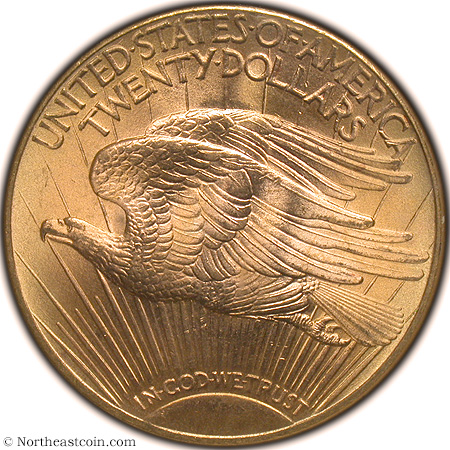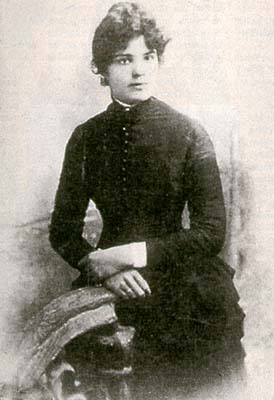
PREV ARTICLE
NEXT ARTICLE
FULL ISSUE
PREV FULL ISSUE
HETTIE ANDERSON: MODEL FOR SAINT-GAUDENSJeff Burke submitted this article on Hettie Anderson, who modeled for sculptor Augustus Saint-Gaudens. Thank you! -Editor
by Jeff Burke
 
Images by Chris Clements of Northeast Numismatics Hettie Anderson modeled a magnificent Liberty striding forward, flanked by sun rays in the background. Hettie's beauty and talent as a numismatic model for Augustus Saint-Gaudens and Adolph Weinman is legendary. Despite not being the sole model for Saint-Gaudens' eagle and double eagle designs, Hettie clearly had an influential role in the process. How do we humanize this goddess of U.S. gold coinage? In fact, Hettie was a biracial professional working at a number of jobs in Manhattan to make ends meet. She combined her modeling work with other occupations while living in an apartment building on Amsterdam Avenue.
I first learned about Hettie Anderson when I came across a reference to her in Roger Burdette's Renaissance of American Coinage: 1905-1908: "…Harriet (Hettie) Eugenia Anderson, a young woman reportedly of mixed racial heritage from South Carolina (born in 1873), posed for the figure of Victory. It was the Victory head that eventually was proposed for the obverse of the cent and then used on the eagle coin." (p. 302). Despite the current focus on establishing one definitive model for each of Saint-Gaudens' eagle and double eagle coins, Henry Duffy, Ph.D., curator of the Saint-Gaudens Historic Site, made the point that Saint-Gaudens' modus operandi was to use several models for a work of art or coin design. Hettie's significant role as a model for our nation's redesigned gold coins first came to light with publication of William E. Hagans' groundbreaking study, "Author Contends Black Lady Modeled for Double Eagle," Numismatic News, Feb. 26, 1991, pp. 54-56, in Robert R. Van Ryzin, Fascinating Facts, Mysteries & Myths About U.S. Coins, 2009, pp. 89, 234. Prior to this recognition, other models were given the lion's share of credit for posing for Saint-Gaudens' eagle and double eagle obverse designs. Hettie posed for Saint-Gaudens at his New York City studio in 1897 for the figure of Victory. (Van Ryzin, Fascinating Facts, pp. 94, 235). When Drew and I, joined by my wife, Beth, visited Aspet in June 2019, a highlight of our trip was seeing an original Anders Zorn etching of Hettie Anderson with Saint-Gaudens during one of the 1897 modeling sessions. Henry kindly retrieved the framed drawing from archives for us, and we were able to have a close look at its remarkable details in the sunlight in front of the Visitor's Center. This particular etching was purchased in 1937 and signed at the bottom by Zorn. Hagans had a personal connection to Hettie Anderson, "an African American, [who] was a first cousin to [his] grandmother, Jeannie McCampbell Lee (1890-1987). Both women were from Columbia, South Carolina." (William E. Hagans, "Saint-Gaudens, Zorn and the Goddesslike Miss Anderson," American Art, Vol. 16, No. 2 (Summer 2002), p. 81). William's grandmother reminisced to family members "how Miss Anderson had been an artists' model in New York City and that she posed for the winged allegory of Victory for the Sherman Monument…and for a gold coin designed by Augustus Saint-Gaudens." Id.
The Sherman Monument was dedicated in May 1903. Located in the Grand Army Plaza square at the southeast corner of Central Park, this monument opened to public acclaim with a frail Saint-Gaudens present for the ceremony. It is interesting to wonder if Hettie was in attendance for the unveiling of this statue. What did she think about the public fanfare, newspaper headlines and photographs of this gilded-bronze monument? As of 1905, Hettie continued her work as a seamstress and had also found employment as a clerk, according to the New York census. She and her mother now shared an apartment at 698 Amsterdam Avenue, about twelve blocks north of the home she had shared with her aunt and uncle. Their relatively new apartment, built around 1900, was a brick building adorned by decorative cornices, with five stories and thirteen units. Hettie's Upper West Side location would have been about half a mile from Central Park, a pleasant walk on a sunny day. Coincidentally, I ended up living on the Upper West Side and working a few blocks from the Sherman Monument. I remember marveling at the gold leaf covering the monument on walks after work as a student minister at the Fifth Avenue Presbyterian Church in the mid-1980s. I resided in an apartment building at 82nd and West End, a 15-minute stroll from Hettie's 698 Amsterdam Avenue address. Hettie traveled from Manhattan to Cornish to model Victory again for Saint-Gaudens in early 1906. (Hagans, "Saint-Gaudens, Zorn," p. 84). By this time, Saint-Gaudens had permanently retreated to his New Hampshire home as he battled terminal cancer. Saint-Gaudens would die the following year. As I studied the exhibit "Carving His Own Path: Homer Saint-Gaudens" on my own visit to Cornish, I remembered the disagreement that Hettie Anderson had with Homer over the Victory bust that Saint-Gaudens had given her as a present. Homer wrote a letter to Hettie after his father's death to ask to borrow and replicate it. Her response came on January 13, 1908: I rec'd your letter…asking me to loan, for the purpose of duplicating, the study of the head made from me by Mr. Saint-Gaudens, when he first began the Sherman group. When Mr. Saint-Gaudens gave me the head he had a small pedestal made with it, and he said: "Some day this may be valuable to you, and if you will let me take it abroad and have it put in bronze for you, it may be worth a great deal of money. I thanked him, but told him that I thought I would take it then—which I did. Valueing [sic] it as I do, and knowing that it is the only one in existence, in that state—I am not willing to have any duplicates made of it, for any purpose whatsoever. You will realize that if I were to allow it to be copied it would greatly depreciate its value— innumerable copies could be made of it. In my possession it is the only one and therefore the more valuable. (Hettie Anderson to Homer Saint- Gaudens, Jan. 13, 1908, Saint-Gaudens Papers, Dartmouth College Library, quoted in Hagans, "Saint-Gaudens, Zorn," pp. 86, 89). Homer later edited Hettie out of his father's unfinished memoirs. Although Homer did not record his rationale, Henry Duffy and other historians believe that he excised Anderson from the autobiography because she refused to let him copy the bust. Interestingly, a bronze cast of this bust, "inscribed ‘to Hettie Anderson/Augustus Saint-Gaudens/1897,'" did appear in exhibitions that memorialized Saint-Gaudens's accomplishments in a number of cities after his death. This version of the bust appeared on display at the Metropolitan Museum of Art, about 1½ miles from where Hettie and her mother lived. The catalog for the Museum's 1908 Retrospective acknowledges "Miss Hettie E. Anderson" for the loan of this stellar work, listed as "no. 92 ‘Sherman Monument: First Sketch for Head of Victory.'" (Hagans, "Saint-Gaudens, Zorn," pp. 82, 86, 89). With Hettie's likeness gracing one of the city's most striking monuments and passing through the galleries of the Metropolitan, might Hettie herself have sometimes visited these sites? Did the clients drawn to her skills in dressmaking recognize that her influence extended far beyond, shaping the coinage and sculpture of the day? We can only imagine answers to these questions. What we know as fact is that Hettie continued to live with her mother, and together they moved to 170 Amsterdam Avenue for a time, as reflected in the 1910 census. Within five years, she and her mother returned to their home at 698 Amsterdam Avenue. They now lived with a "Benjamin Anderson," identified in the 1915 state census records as head of household. Hettie continued to work as a seamstress. 
Courtesy of Shorpy.com New York circa 1902. "Metropolitan Museum of Art." The Fifth Avenue addition to the original 1874 structure nearing completion. The pyramids of rough-hewn limestone blocks in the Beaux-Arts cornice, intended to serve as the basis for four sculptural groups, remain unfinished to this day. By 1920, Hettie (or "Hattie," as the census recorded her name that year), had expanded her career and found employment as an attendant at the Metropolitan Museum of Art. Nearing her fiftieth year, she lived alone at the 698 Amsterdam Avenue apartment once shared with her mother. 1920 marks the last federal census to include Hettie Anderson. Later New York and federal census records shed no clues on her whereabouts. In September 2015, Greg Schwarz of the Saint-Gaudens site wrote that he and "a distant cousin of Hettie [had] been looking for Hettie's death record and burial site as well." (E-mail to Barry Popik from Gregory Schwarz, Sep. 6, 2015, courtesy of Barry Popik.) Schwarz continued: "[Hettie] lived at least until the late 1930s in Manhattan. We think that she probably died in the 1940s."
At Saint-Gaudens' New Hampshire retreat, vistas of the Green Mountains span the years between Hettie's time there and the experience of visitors today. Drew, Beth and I enjoyed a cool, beautiful day, with spring flowers in bloom and Mount Ascutney clear in the distance. No wonder Saint-Gaudens and his guests valued Aspet as a respite from the bustle of New York City. We concluded our visit with a walk to the temple. This striking marble monument is the resting place for the Saint-Gaudens family ashes. Its peaceful location is edged by woods that lead to a flowing stream. The temple faces a broad meadow, multicolored with hues of wild grasses like a painter's canvas. Sadly, Anderson's own gravesite and death records have not been located. But her legacy remains in sculpture and on Saint-Gaudens' ten- and twenty-dollar gold pieces. Her influence is also now fully acknowledged and documented – as, for example, in auction catalogs featuring double eagles. (See "Hettie Anderson, Model for Saint-Gaudens," The E-Sylum, Vol. 22, No. 2, Jan. 13, 2019). Hettie Anderson was a star model in a demanding profession. A young, mixed-race woman from South Carolina became the enduring symbol of Liberty on coins that number among our nation's most captivating numismatic treasures. Acknowledgements: I extend my thanks to Dr. Henry Duffy, who spoke to me by phone and in person at length. Henry guided me through federal and state census records painstakingly compiled by Gregory C. Schwarz (retired), Chief of Interpretation and Visitor services, Saint-Gaudens National Historic Site. Dr. Duffy also showed us the Zorn etching of Saint-Gaudens and Hettie. Librarians at the New York Public Library kindly provided me with historical records about the building at 698 Amsterdam Avenue in Manhattan. Roger Burdette, distinguished numismatic researcher and author, gave me research tips and other guidance to help with this article. Thanks also to etymologist Barry Popik and noted FUN presenter Ray A. Herz for sharing their research on Hettie Anderson with me. Finally, thank you to Beth Christie Burke for her assistance with this manuscript. Hettie Anderson photo used with permission from the Saint-Gaudens National Historic Site: https://sgnhs.org/augustus-gaudens-cd-html/Models/Hettie.htm . To read the earlier E-Sylum articles, see:

Wayne Homren, Editor The Numismatic Bibliomania Society is a non-profit organization promoting numismatic literature. See our web site at coinbooks.org. To submit items for publication in The E-Sylum, write to the Editor at this address: whomren@gmail.com To subscribe go to: https://my.binhost.com/lists/listinfo/esylum All Rights Reserved. NBS Home Page Contact the NBS webmaster 
|


